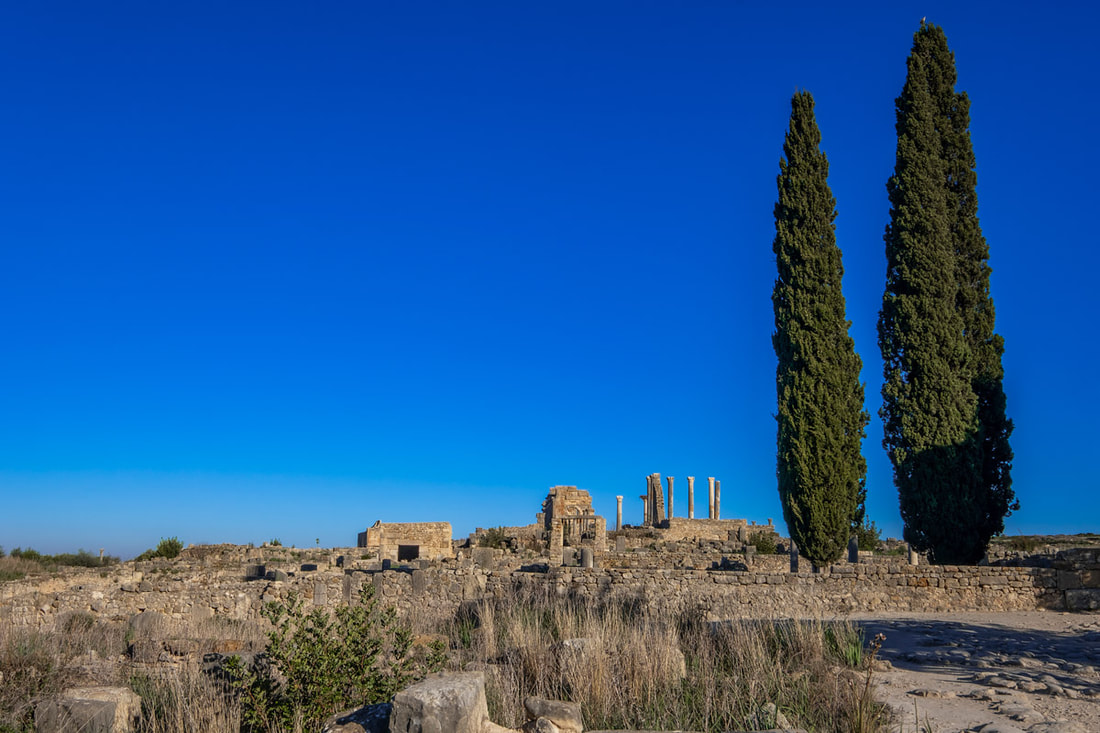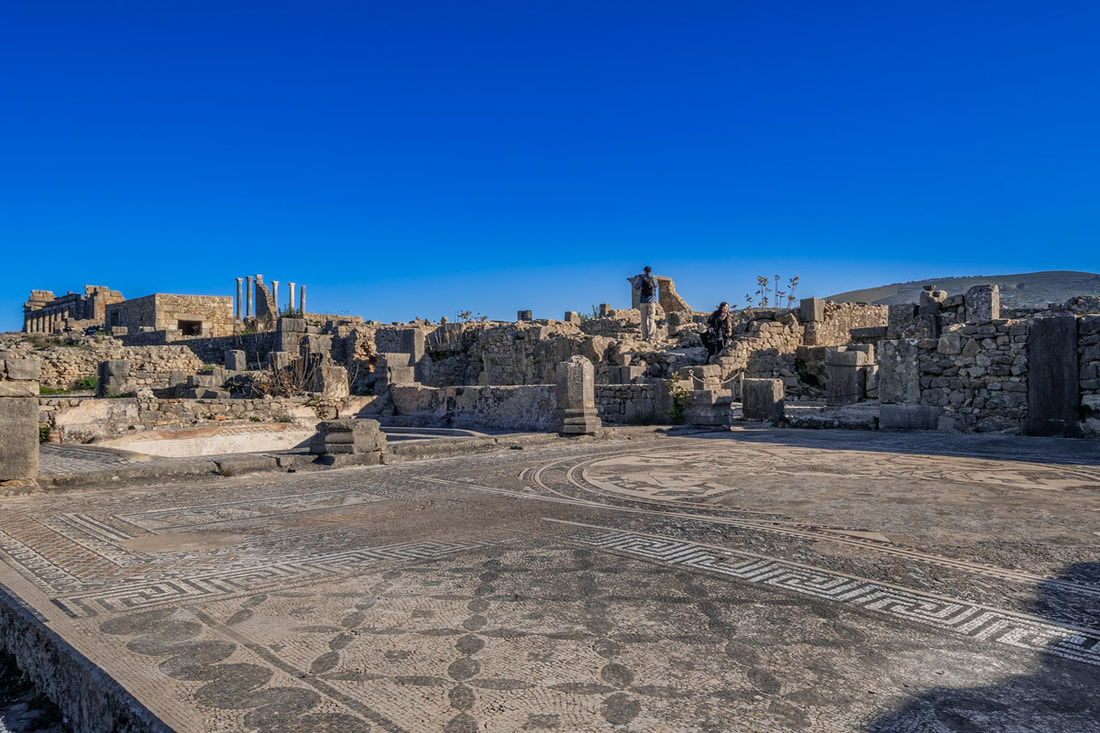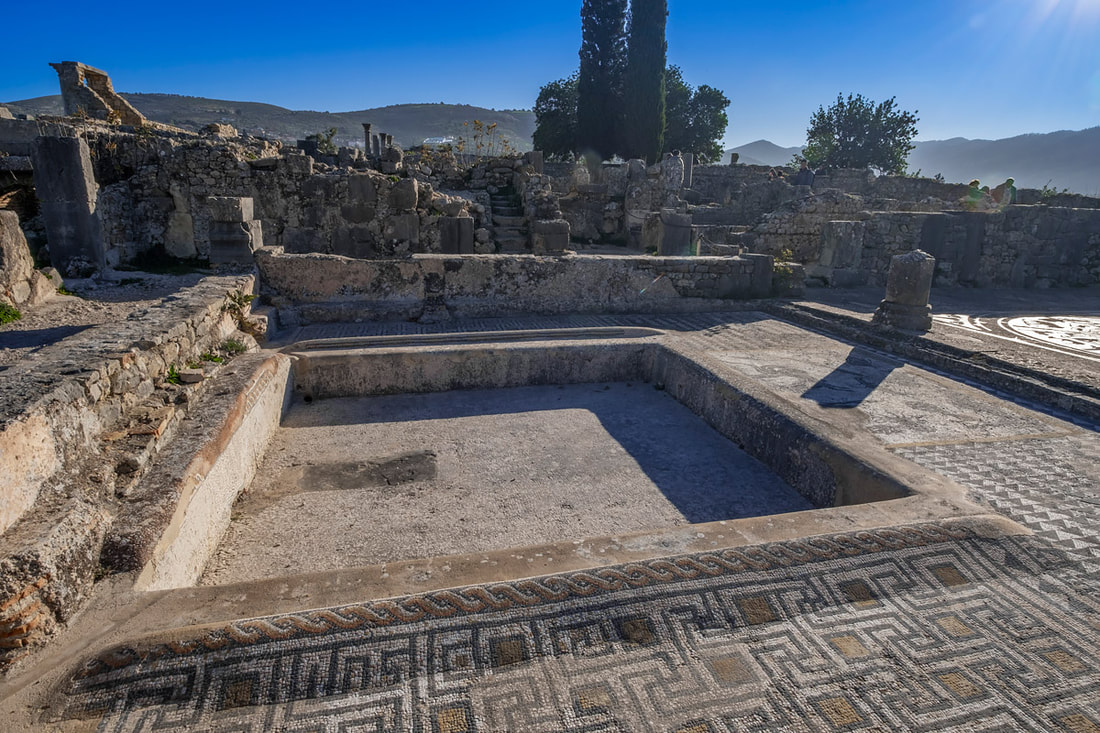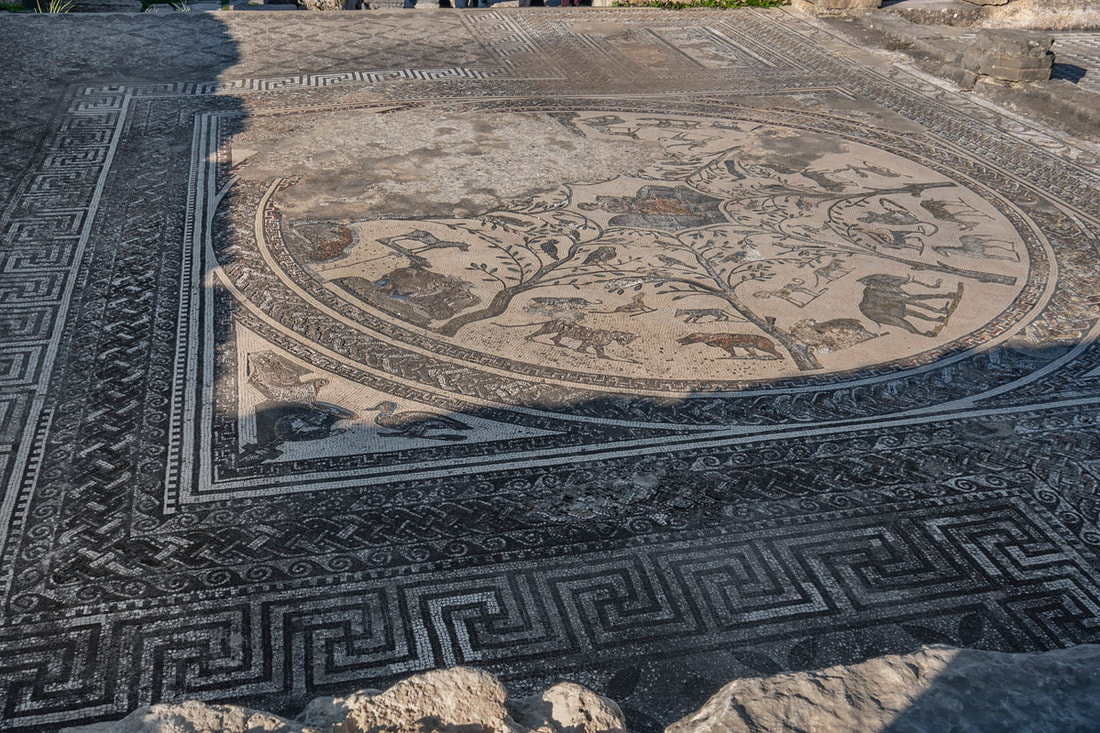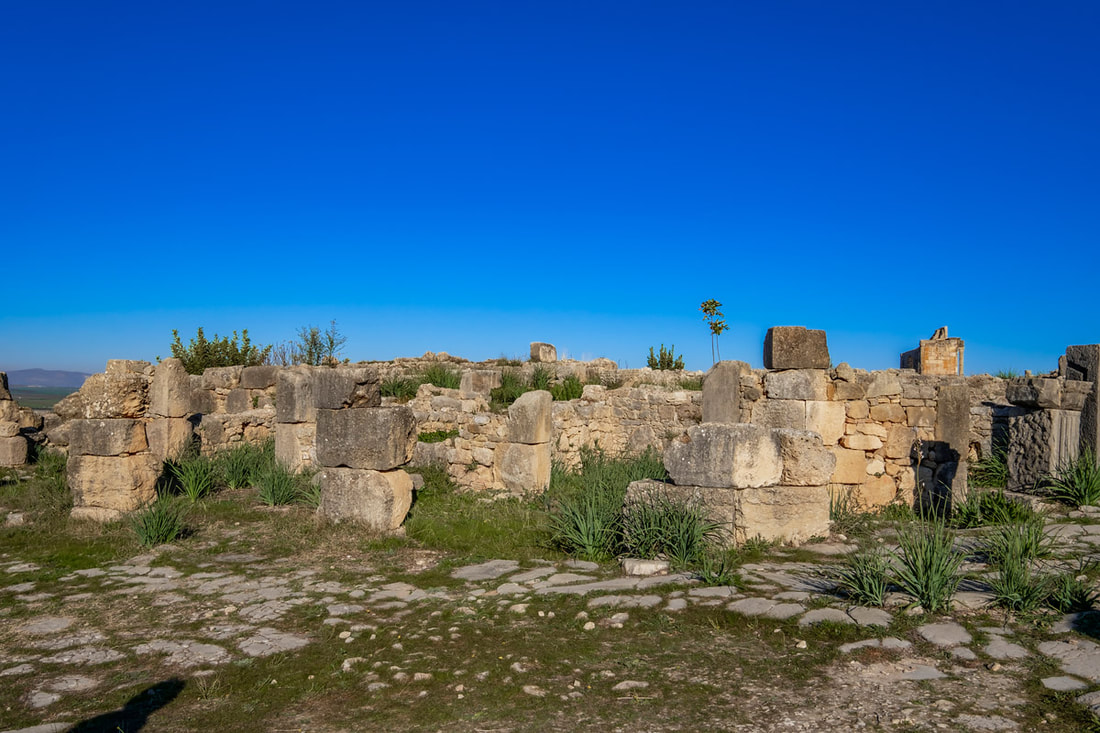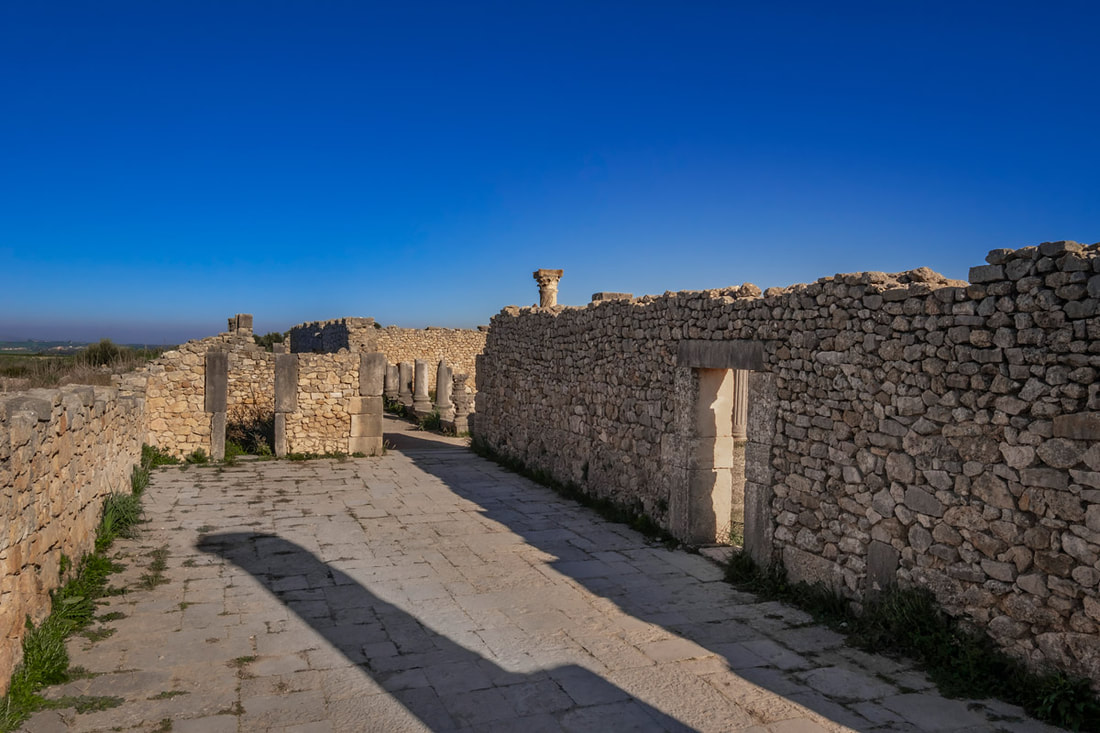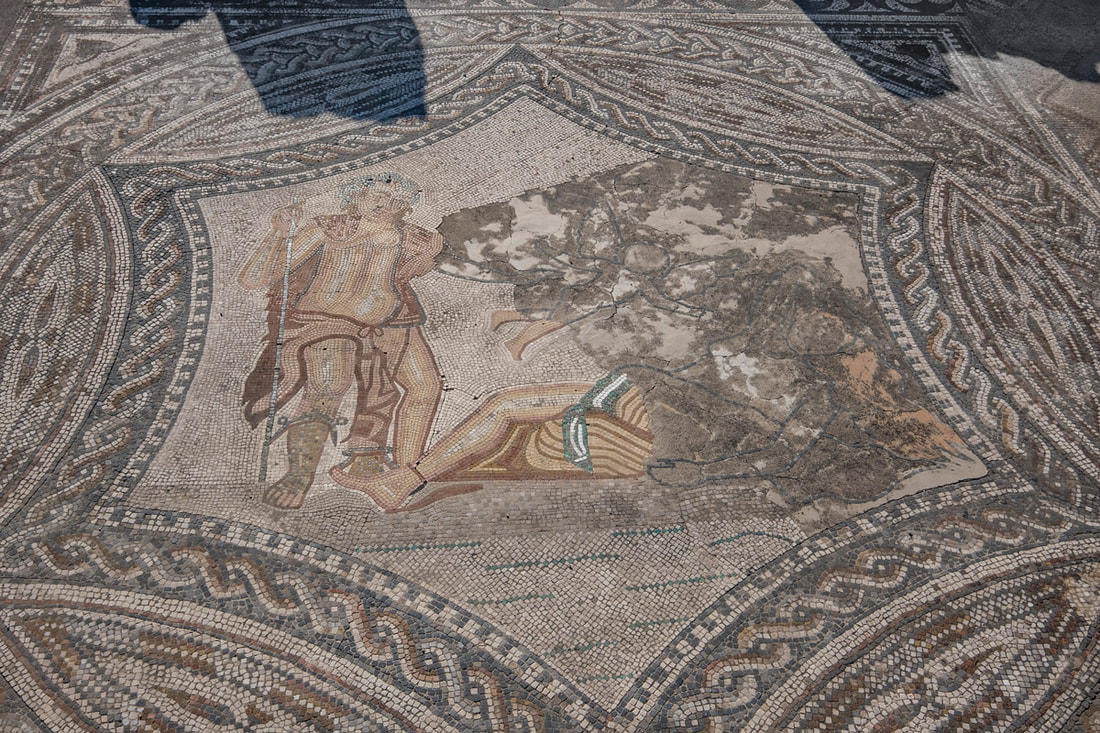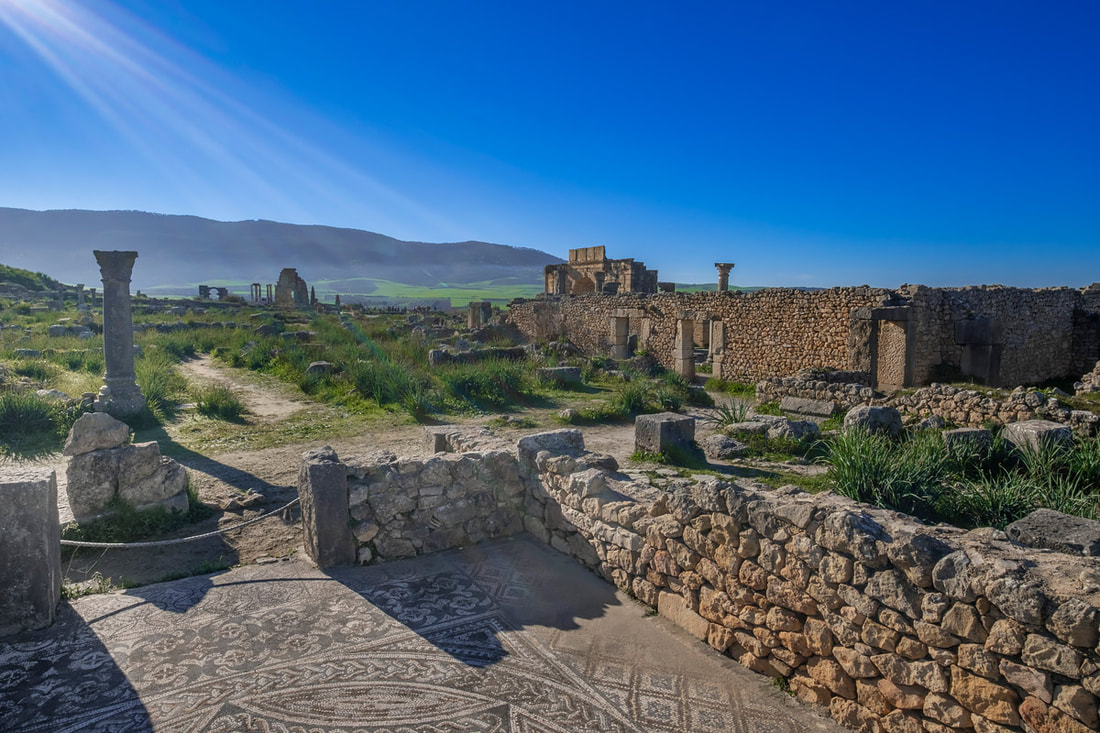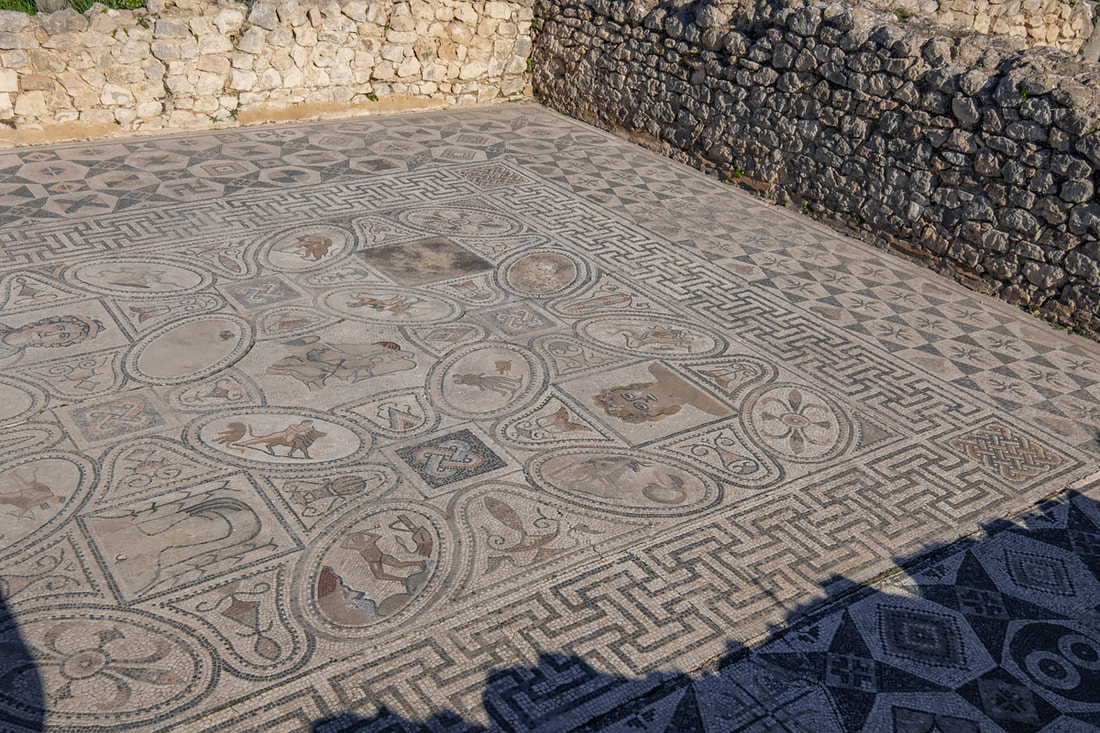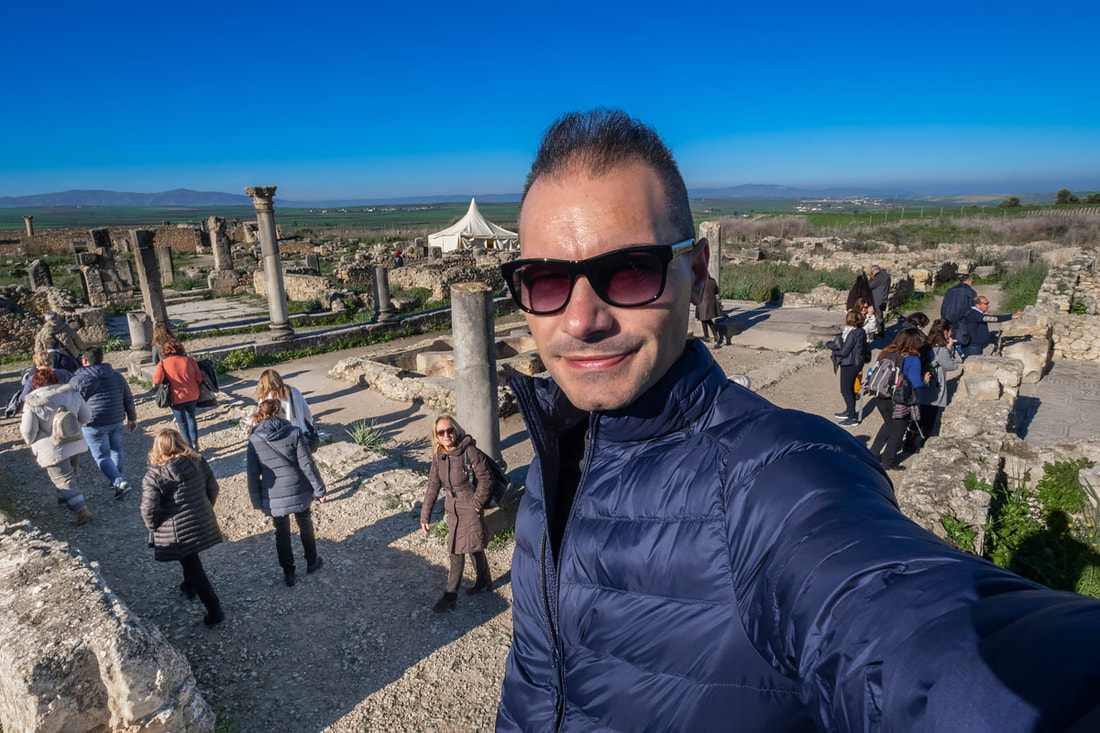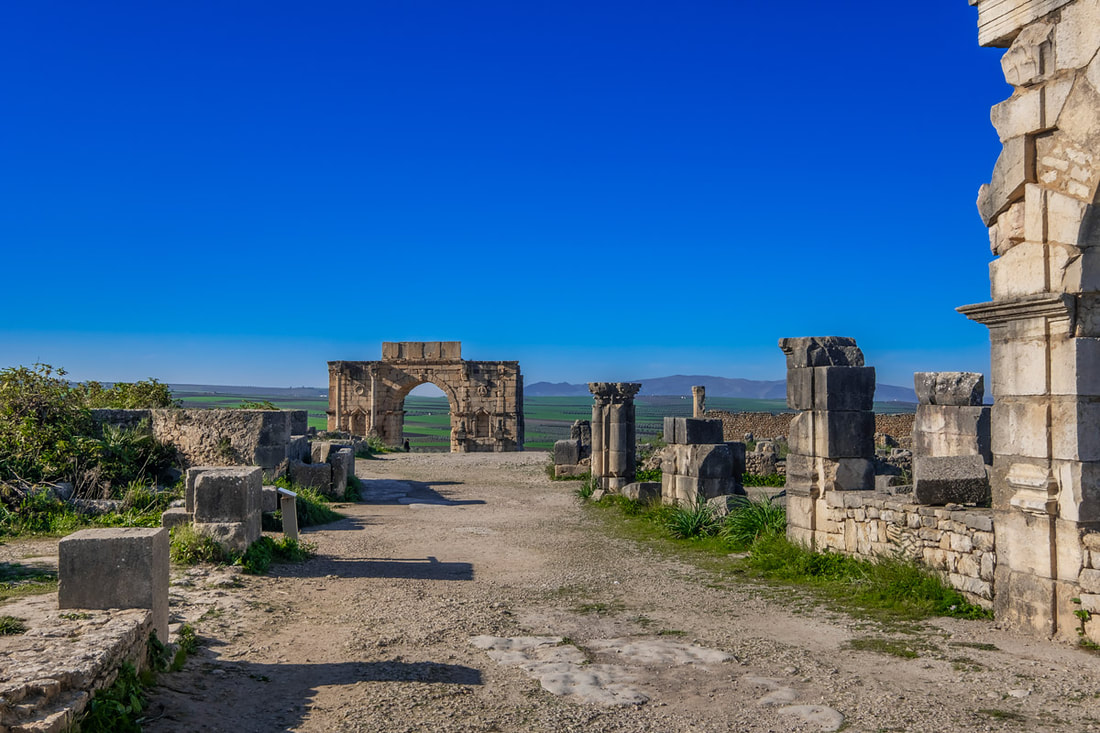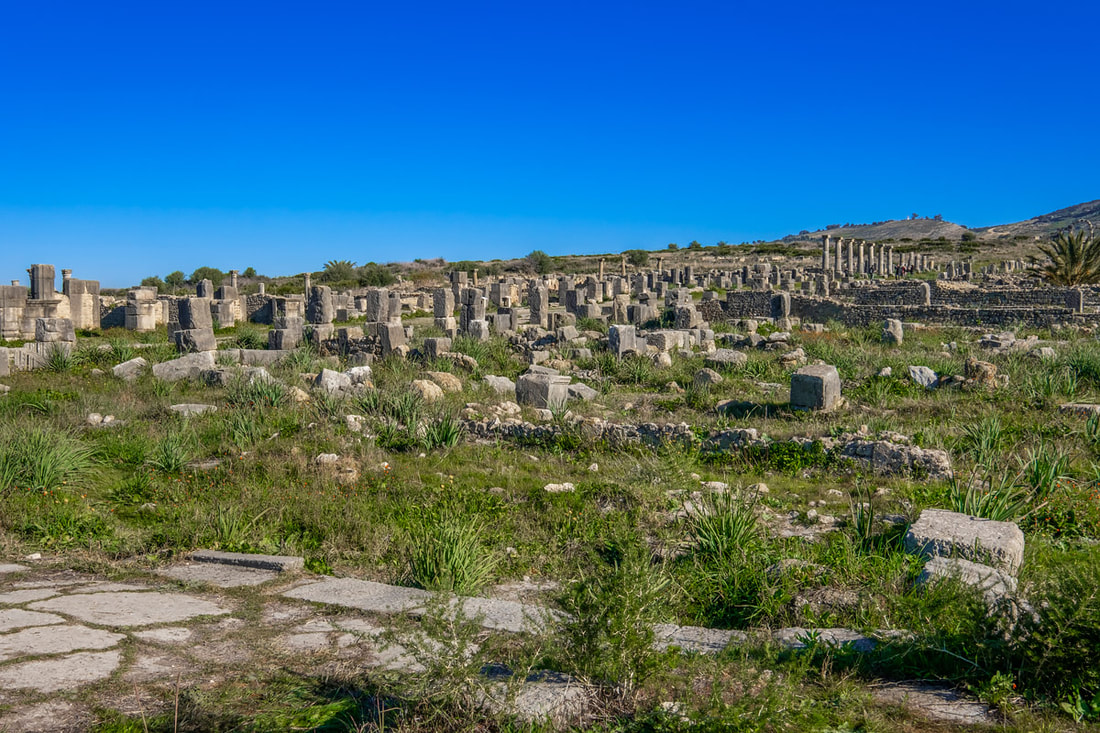By Antonio MalaraThe archaeological site of Volubilis was the fifth place I visited in Morocco during a trip I did with my sister and a group in January 2019. The visit was a stopover during the journey from Fès to Meknès. The journey to reach this destination took us further north, with the route drawing a sort of triangle when we then headed towards Meknès. To be honest I hadn't studied Volubilis and during the trip I listened to the guide to learn something, in my mind I was expecting something like a few ruins in a small space and instead the place was an unexpected discovery. We arrived in a large parking area around 10 AM and after a short walk we found ourselves in front of a not very high wall with a normal-sized stone arch which was in fact the entrance to the archaeological site. Neither during our approach near the site, nor in the parking area, had I noticed anything about the Roman city, so that arch was the first thing that distinguished the place. Once through the arch, immediately appeared a road made up of large cobblestones, the place was dominated by two large cypress trees and columns could be seen in the distance. To reach the first place of interest, however, we had to walk for about twenty minutes, until a mosaic appeared from the ruins. In reality they were like two rooms with a difference in level between them, the mosaics were still lower than our position. In one room there was a mosaic representing the design of the Greek frame while in the other, which was circular in shape, there were drawings of trees and animals that were perfectly preserved. The site had one of the things that are essential for me personally; in many posts I have already said how I love wild places where there are no controls and safety devices. Volubilis was like this and after becoming a little familiar with the place, together with my sister we used the ruins as props for photos. Always with the utmost respect for our surroundings, we took photos using a capital placed on the ground, as if they were decorated seats. Together with the group we arrived at the Basilica, a structure that was well preserved and in any case the ruins present there gave the feeling of what the place must have been in ancient times. There was a nave made up of eight arches that still miraculously stood. The structure rested on a sort of staircase that ran the length of the entire nave and was made up of four steps. In addition to this large structure there were also many columns, but in fact they were the most widespread element throughout the site. One thing that was very well appreciated from the Basilica was the Capitoline Temple (you can see it in the cover pic of this post). What remained of it was a beautiful staircase that led to a floor where several columns were arranged. The structure stood out because although there were few elements, it gave the impression of a temple gone into ruin. Probably not everyone will have grasped this but the raised position of the top and the arrangement of the columns gave me this sensation. It was precisely "inside" the Basilica that my sister and I broke away from the group. We used the ruins to take some more original and fun photos before continuing the exploration on our own. Following what was one of the main roads we walked until we reached the Arch of Caracalla, which was located in a sort of crossroads from where another very wide road made of stones started which led to the northern exit. The arch was completely made of stone, it was a much smaller version of the one I had seen in Jerash, however the design was almost identical. The columns in the external part were also present, only that of the original four, only two were still present. Despite being modest in size, the large blocks of stone with which it was built were very impressive and the Arch of Caracalla was overall well preserved, probably the best preserved thing in Volubilis together with some mosaics. Regarding them, we saw the last of them immediately after leaving the arch in what was supposed to be "the knight's house". Right there was a mosaic depicting two men that was almost intact. Subsequently we reunited with the group, this is because the site was uneven and most of the people had stopped halfway but slightly further inside. There I helped an elderly lady in the group climb over a wall, an inevitable operation to continue the journey backwards. There the guide told us the last things before going back and right there, after climbing yet another wall, I took the photos that best represent the entire archaeological site. When we went back, we passed by the museum which was right before the exit. This rectangular building was quite ugly, we didn't visit it but there was something inside that immediately caught my attention. It was a very large map that represented the Roman Empire I believe at its peak. I must say that seeing the empire represented on a map of that size left me perplexed rather than impressing me. What I thought and what I still think today is something based on elementary logic. Ancient civilizations probably had very advanced technologies unknown to us if we attribute the conquest of those vast territories to them. I find it unlikely that the men of that time conquered Europe, the Middle East and North Africa on horses and used them as logistics to build those colossal works. It is clear that there is a historical reconstruction of convenience, but we could do a test and leave with horses from London and get to Volubilis but without fighting, I’m curious to see how many horses would remain survivors. However, the interesting thing I noticed on the map was the location of my city. In fact, Rhegium was right in the center, this detail made me feel important, it made me feel like the center of an empire born under the equine sign. Bonus PictureIn the sixteenth photo of this post, looking up starting from the left side of the arch, there is an object suspended in the air. Initially I was convinced that it was some dirt on the sensor but then zooming in on the original photo on the computer, I saw that the object is in all respects a flying saucer, a UFO as we know it today. It's hard to see it in the photo and if it hadn't been for the editing I wouldn't have seen it on the computer either. However, I wanted to make a crop starting from the original photo and I'm posting it as the last because I believe it is correct to show this kind of visual information also to compare with others and find out what they think about it. Pictures: Antonio Malara
Camera: Fujifilm XT-3
0 Comments
Leave a Reply. |


